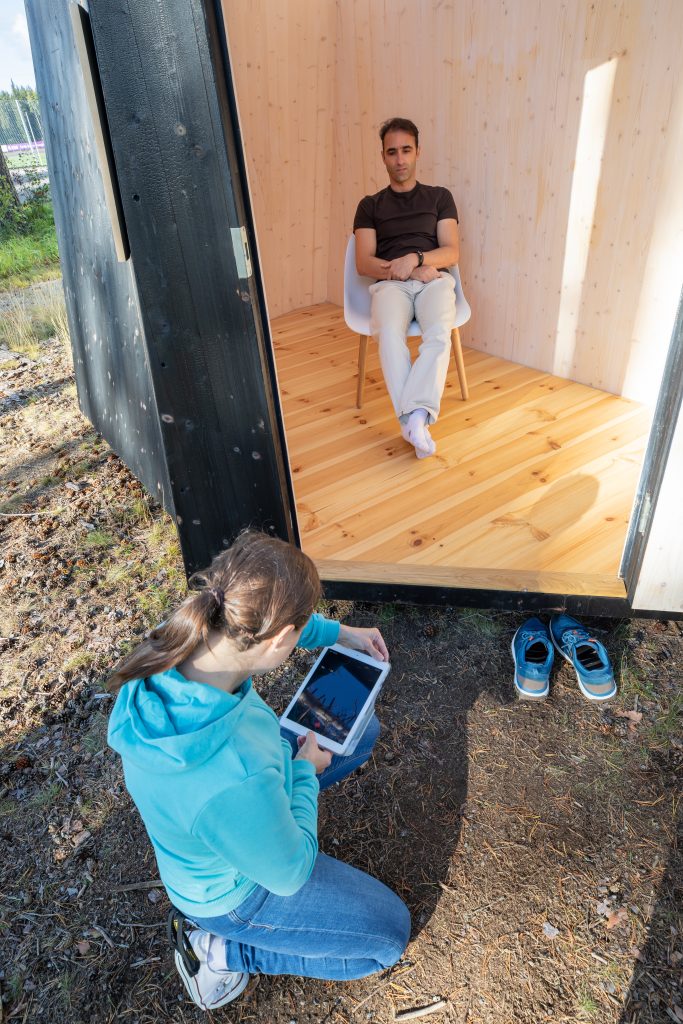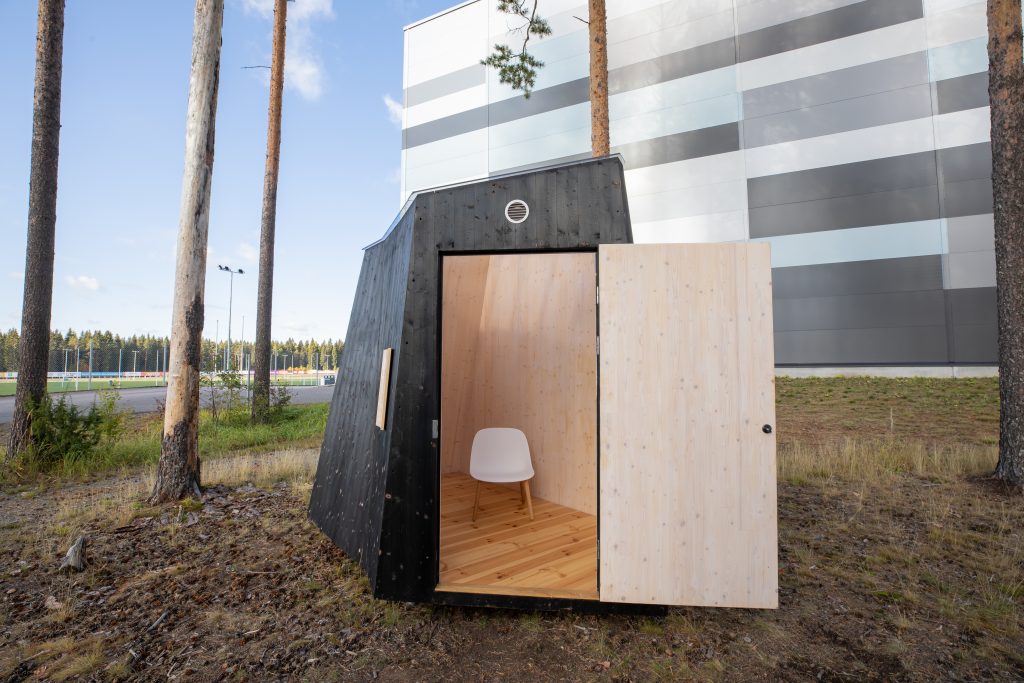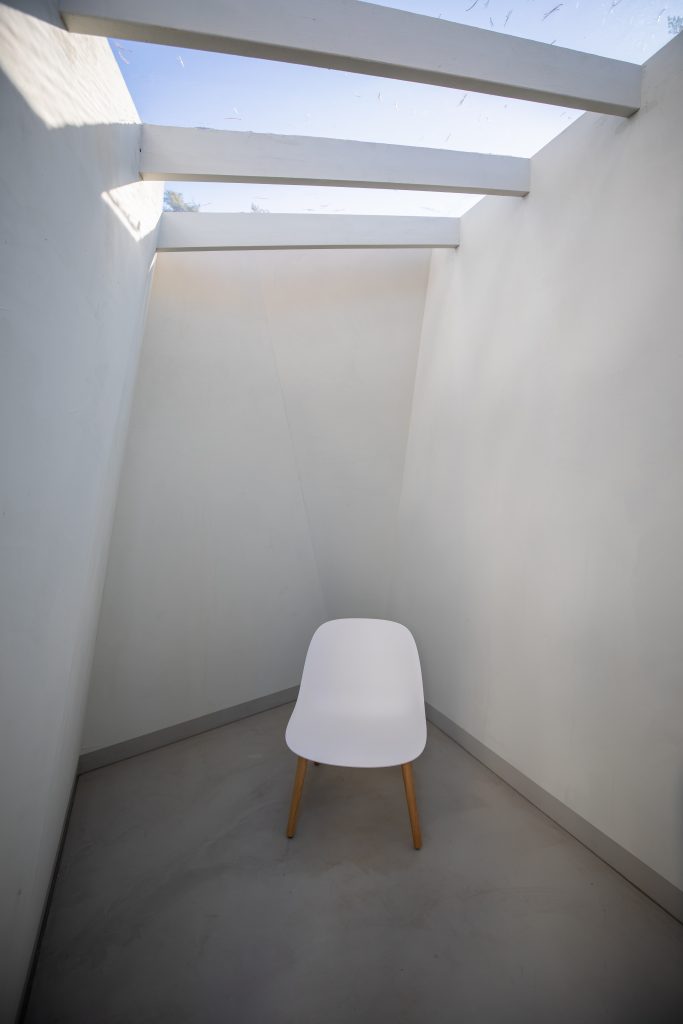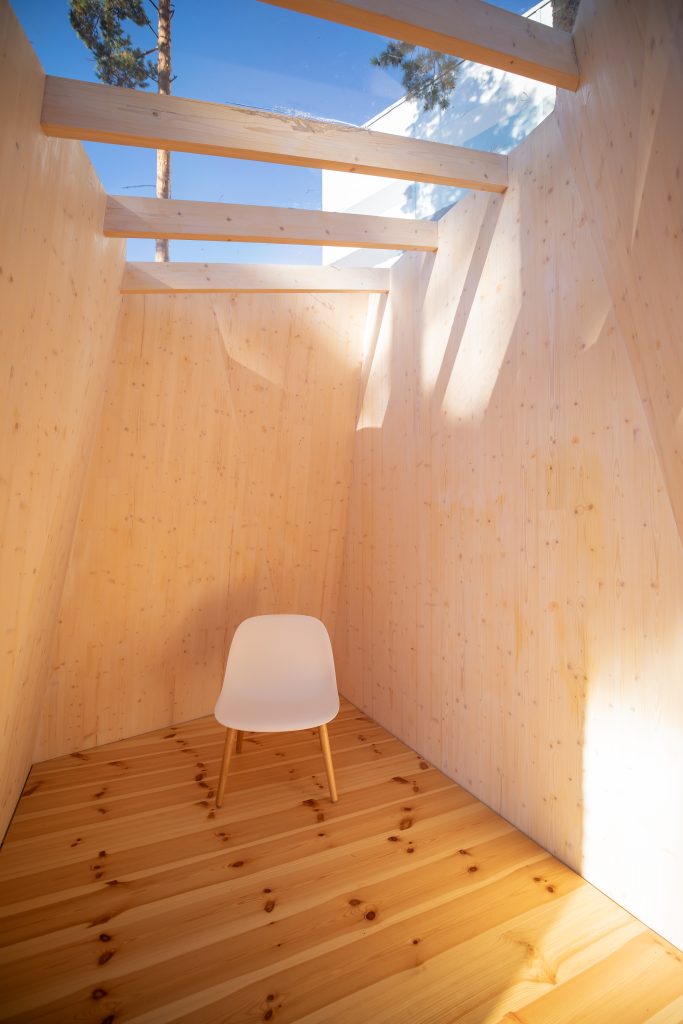Does wood improve your well-being indoors?
There is a lot of folk wisdom about wood’s positive health effects, but only a few of these beliefs are backed up by research. RDI Specialist Susanne Kumpulainen and her team at the Active Live lab research unit at the South-Eastern Finland University of Applied Sciences (Xamk) have investigated the psychophysiological effects of rooms with interior wooden surface materials.
Text: Sami Anteroinen, Puuinfo Oy Photographs: Manu Eloaho
Read the article in Finnish here.
The biophilia hypothesis tells us that humans have an innate tendency to connect with nature. This connection helps us recuperate from psychophysiological stress. Several scientific studies have also successfully demonstrated the correctness of this theory by observing nature’s healing effects. But, the question remains: how can we bring the “biophilia effect” indoors where human beings spend an ever increasing amount of their time?
Post doc researcher Susanne Kumpulainen believes it is important to let people benefit from nature’s health effects indoors. “Wood is different than other biophilic elements because it is often used as a building material. It can cover large areas in rooms, providing people with a significant interaction with nature,” she notes.



We have lot of studies on how using wooden surface materials promotes a sense of well-being but more research evidence is still needed. Matti Kilpiäinen is a project manager at Xamk and leads the PUUSTA project on well-being from wood innovations that includes Kumpulainen’s wood surface research. Kilpiäinen notes that the research was launched with an open mind, but with cautious optimism. “We have extensive expertise in the topics of wood and well-being, so we hoped to bring these two together. We didn’t have huge expectations as we thought this was more of a test run project,” says Kilpiäinen in describing the start.
Studying the health effects of wood
The study aimed to measure the psychophysiological effects of spending time in a room that has interior wooden surface materials. This was done by recording heart rate variability (HRV) and by asking subjects to fill out a questionnaire on their well-being. The focus was on HRV, which reflects the balance between the sympathetic and parasympathetic systems that together make up the autonomic nervous system. The parasympathetic nervous system calms the body, allowing the body and its various organs to recuperate and maintain their resting state. Its counterpart, the sympathetic nervous system, is triggered by activity and exertion and by stress in particular.
“When your HRV is high, this indicates that parasympathetic activity is higher and that your body has recuperated,” says Kumpulainen.
In all of us, the activity of the sympathetic and parasympathetic nervous systems is a balance of all our external pressures and psychological factors.
“Your HRV is an indicator of your emotions and your mental health. A low HRV comes from anxiety, stress, and depression and is associated with higher morbidity and mortality.”
Research outcomes
To determine wood’s health effects, the study set up two test rooms: one with a wooden interior and one without. Teemu Seppänen and Aleksi Niemeläinen, architects at Futudesign Oy, designed a test room with CLT structures, and Xamk’s wood technology laboratory added the finishing touches to the interior. The test rooms were located in a pine forest near Saimaa Stadium in Mikkeli.


A total of 45 people took part in the research, which was done in the summer of 2022. The test subjects did not know exactly what was being studied and were told to behave as normally as possible. Research assistant Juho Koski took the measurements.
The test subjects spent ten minutes in each room in random order while their heart rates were monitored. When switching rooms, the test subjects were given a two-minute break. The final step saw the participants answering a questionnaire to help analyse their feelings and sensations.
The result was reduced heart rate variability
The research results show that the test subjects had a higher HRV in the wooden room, which indicates that the calming parasympathetic nervous system was more active. The subjects also breathed more calmly, resulting in a slower breathing rate in the wooden room.
“Breathing settled down to a frequency close to the natural resonance of the heart and lungs.” Lower breathing rates have the additional positive effect of promoting a more efficient metabolism in the body. The combination of these two factors (a higher level of parasympathetic nervous system activity and a lower breathing rate) promotes better physical health, the specialist concludes.
“These factors improve mental health and can reduce stress, anxiety, and depression.” According to Kumpulainen, the differences in this study were quite small. “Ten minutes in a wooden room is not enough to produce larger improvements in well-being, but the effect is already apparent.”
Continuing to collect evidence
Kumpulainen is particularly pleased that there is now documented scientific evidence of the positive physiological effects of wooden rooms. Matti Kilpiäinen very much agrees that the research produced a fine result.
“From the beginning, we felt that we were on the trail of something important and that this was a good place to start. As it turned out, we had gone straight to the heart of the matter and discovered clear research evidence”, says Kilpiäinen. The next step is to send the results for scientific peer review.
There is still plenty to research on the topic, including how do different types of wood affect people? Clearly, we have only taken our first steps down the road to enlightenment.
Susanne Kumpulainen (Ph. D. Biomechanics) is a doctor of Sport and Health Science, her main research topic being neural adaptations in the brain and peripheral nervous system. Kumpulainen currently works at Xamk as an R&D expert in various well-being-related studies.

